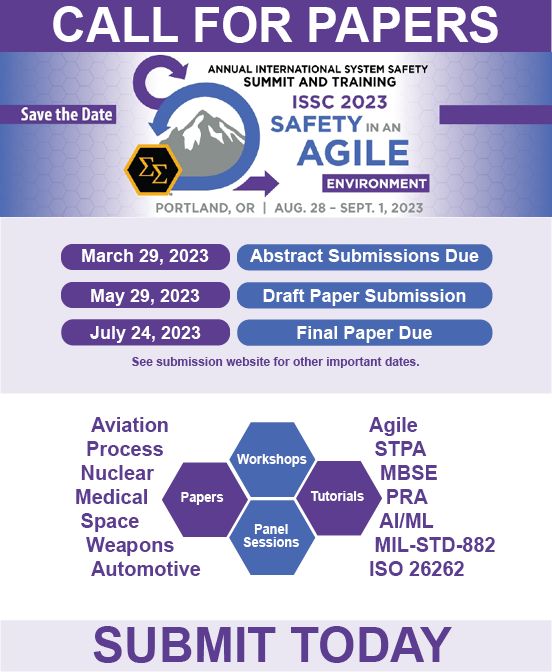Virtual Button and Graphical Interface System Safety Evaluation using System Theoretic Process Analysis (STPA)
DOI:
https://doi.org/10.56094/jss.v56i2.21Keywords:
STPA, STAMP, graphical interface, requirementsAbstract
System Theoretic Process Analysis (STPA) is an extremely valuable methodology, especially when used early in a system’s concept phase, for effective and efficient development of safety requirements that address potential safety issues associated with human machine interactions.
This paper outlines how STPA can be used to explore potential safety concerns associated with interactions between human operators and virtual buttons within graphical interfaces across the planned operational scenarios and expected system behaviors. Appropriately validated system safety requirements can be developed based on this exploratory effort.
The paper shows how STPA includes drivers and operators as system elements within the control structure where these humans are expected to interact with a “system/feature of interest” by means of virtual buttons presented in a graphical interface. The inclusion of humans as elements of the control structure enables a representation of the human as a “human controller” and, as such, enables STPA evaluation techniques to be applied to them just as these techniques would be applied to any “control” element in a control structure.
References
International Organization for Standardization. "ISO 26262-1:2018 Road vehicles - Functional safety - Part 1: Vocabulary," ISO copyright office, 2018.
France, M. E. Engineering for Humans: A New Extension to STPA (Publication No. 1008570407), Master's thesis, Massachusetts Institute of Technology, 2017.
BYTON. "BYTON M-Byte. Your Platform for Life" (Photograph), 2020, https://www.byton.com/m-byte
Tesla. "Introducing Dog Mode: Set a cabin temperature to keep your dog comfortable while letting passersby know they don't need to," (Twitter), 2019, https://twitter.com/Tesla/status/1095885520058515456.
Sheehan, M. "Ignition Key - 2013 Dodge Dart Rallye" (Photograph), 2012, https://www.flickr.com/photos/hightechdad/8475491943/
Sheehan, M. "Push Button Ignition - 2014 BMW X5 xDrive 35i" (Photograph), 2014, https://www.flickr.com/photos/hightechdad/15043065112/

Downloads
Published
How to Cite
Issue
Section
Categories
License

This work is licensed under a Creative Commons Attribution-NoDerivatives 4.0 International License.













